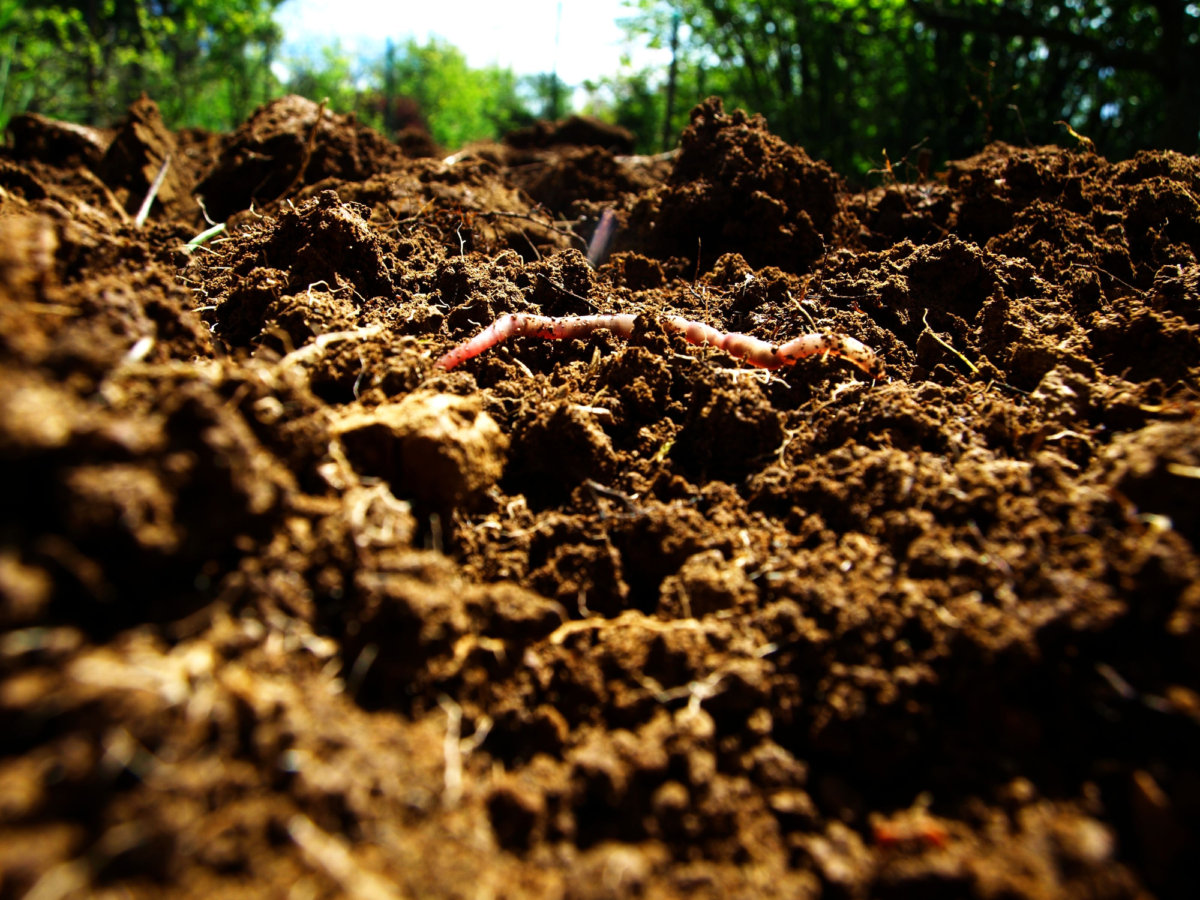
During our 25 years in business, ideas about soil health have changed from focusing on chemistry to focusing on biology. Earthworms and a variety of smaller critters play key roles in soil health.
[Ed. note: In honor of our 25th anniversary, this is the second of several blog posts about changes we have seen in landscape practices over time.]
When we started In Harmony 25 years ago, our goal was to take a more natural approach to the landscape. We wanted to build the health of plants and soils for our clients, whether we were installing a new landscape or maintaining their lawns, trees and shrubs. Improving soil health would mean plants could thrive without relying on chemicals.
At the time, horticulture schools and standard industry practice focused on soil chemistry. Gardeners and landscapers were taught to feed plants by adding nitrogen, phosphorus and potassium (commonly written on fertilizer labels as N-P-K) to the soil. While plants need nutrients to grow, we now know that chemistry is only part of the picture.
Soil biology revelation
In the 1990s Elaine Ingham, a microbiology professor at Oregon State University, presented a workshop for the Seattle-area landscape industry about soil biology. It was the first time any of us had received detailed information about the complex ecosystem under our feet.
We all knew about earthworms, but most of us hadn’t realized that fungi, bacteria, protozoa, arthropods and nematodes also played valuable roles. Dr. Ingham provided photos and detailed information about the functions of each type of organism and how they fit together into the soil food web. It was a revelation.
We were blown away. Who knew there were millions or even billions of individual organisms in each handful of soil? We thought, this is going to change how we think about our gardens and landscapes.
Soil food web
Not long after her visit, Dr. Ingham wrote the Soil Biology Primer. The Soil and Water Conservation Society printed and distributed the booklet, and the US Department of Agriculture made it available online.
The primer provided much more detail about the complex soil food web. It was widely distributed to gardeners and landscapers, affecting the views of a wider group, both landscape industry professionals and consumers.
Read our recent blog post to find out more about the soil food web.
Building the health of the soil food web
Dr. Ingham suggested ways to build or rebuild the health of the soil food web, such as through compost tea. Not long after, we invested in compost tea brewers from Growing Solutions.
We have been brewing and applying compost tea to new and existing landscapes ever since to help introduce and replenish beneficial organisms. We also use organic mulch to build soil health while reducing weeds and water use. And we amend the soil of new landscapes as part of the installation process.
Our clients say they see stronger, healthier plants and more flowers. We are pleased to see their landscapes thrive.
Other products for soil health
Over the years we have continued to learn and revise our approach. For many years we have been using products such as mycorrhizae fungi, kelp and microminerals. We have also been using Hendrikus Organics fertilizers. These products add nutrients (N-P-K) but also include microbes to help stimulate microbial activity and improve soil health.
In recent years we have introduced effective microorganisms (EM) to provide essential micronutrients for the health of trees and shrubs. EM have numerous benefits. They improve both the structure of the soil and its biological diversity. They suppress soil-borne pathogens and make the soil more fertile. Organic materials decompose more quickly, so mineral nutrients and organic compounds are readily available to plants. Plants are stronger as a result.
Soils and runoff
Water quality has become a bigger issue over the last several years. Increasing urbanization means more pavement and greater runoff into local streams and lakes.
Healthy soil plays a role in protecting water quality by reducing runoff. For example, rain gardens use specific soil mixes to slow and filter runoff. And thick layers of mulch absorb and retain water on the landscape. So using organic matter to improve soil health also leads to cleaner water.
Learn more about our approach to lawn, tree and shrub care and to landscape design and installation on our website.
